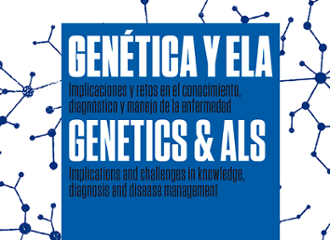Research projects
Start of main content
Biocompatible nanoformulations: targeted delivery of bioactive compounds for the treatment of Inborn Errors of Metabolism
22st national competition for scientific and technical research
Rare diseases
Senior Researcher : Belén Pérez
Research Centre or Institution : Departamento de Bioquímica y Biología Molecular. Facultad de Ciencias. Universidad Autónoma de Madrid
Abstract
Of the nearly 8,000 diseases classified as rare diseases (RDs), between 4,000 and 5,000 lack any form of treatment. The limited number of patients who could benefit from a specific therapy, combined with the need for an exhaustive characterization of the molecular consequences of genetic variants, have been key factors in explaining the pharmaceutical industry's historically low interest in these conditions. Currently, the growing investment in protein engineering, RNA technology and gene editing is driving increased interest from the pharmaceutical industry in diseases with high mortality rates and no effective therapy. One such condition is PMM2-CDG, an autosomal recessive genetic disorder caused by a deficiency in phosphomannomutase 2 (PMM2), a cytosolic enzyme that catalyses the conversion of mannose-6P to mannose-1P, the first step in the protein glycosylation pathway. PMM2-CDG is a multisystemic disease characterized by severe neurological impairment and cerebellar atrophy.
In this project, we propose combining the targeted delivery of different drugs using biocompatible nanoformulations designed to reach the liver, as well as nanocarriers capable of crossing the blood-brain barrier. The study will follow a multi-step validation cascade, starting with PMM2 knockout cellular models generated via gene editing, followed by validation in patient-derived fibroblasts and ultimately in hepatocytes, Purkinje cells, and cerebral organoids derived from hiPSC (human-induced pluripotent stem cells) from PMM2-CDG patients. In these models, we will assess the restoration of PMM2 activity as well as the recovery of affected cellular processes through the analysis of epigenetic, transcriptomic, and glycoproteomic signatures. Finally, we will evaluate the therapeutic effect and biodistribution in a murine model of PMM2-CDG.
-
 Activities related
Activities related
-
 Projects related
Projects related
-
 News related
News related
-
 Publications related
Publications related
 Activities related
Activities related
-
26
Jun
2024
Conferencias La aventura de la ciencia Madrid, Miércoles 26 de junio de 2024, 19:00 horas
-
13
Feb
2025
17th edition. Cycle of conferences and debates in science Digital Twins: Technological Advances and Application Opportunities Madrid, Thursday, 13 February 2025, 17:30 hours
-
18
Feb
2025
Session New Therapies for the Inflammation Treatment Madrid, Feb 18th, 2025, Tuesday. 4PM
 Projects related
Projects related
- Development and Application of saRNAs for the Treatment of Rare Monogenic Diseases 2024 Senior Researcher : María Luisa Cayuela Fuentes
- CHANNELOSOME RESCUING PEPTIDES IN THE TREATMENT OF ARRHYTHMIAS IN INHERITABLE HEART DISEASES 2024 Senior Researcher : José Jalife Research Centre or Institution : Centro Nacional de Investigaciones Cardiovasculares (CNIC). Madrid
- Mechanisms for sustaining mitochondrial genome integrity and function during hematopoiesis. 2024 Senior Researcher : Ana Victoria Lechuga Vieco Research Centre or Institution : Fundació Clínic per a la Recerca Biomèdica. Hospital Clínic. Barcelona
 News related
News related
 Publications related
Publications related


End of main content



